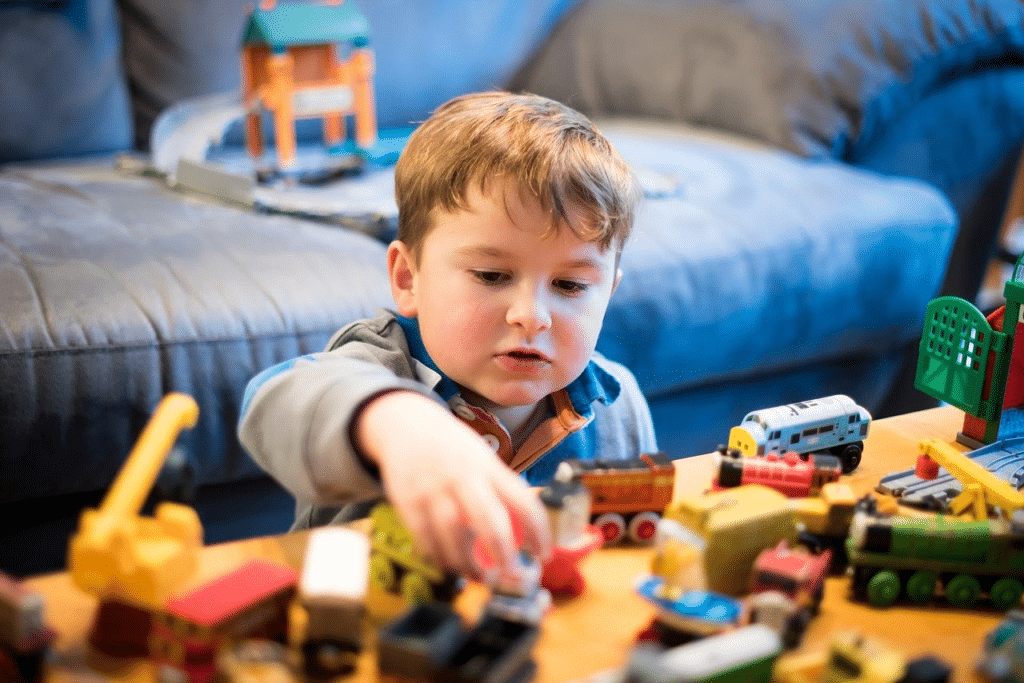Written by:
Amanda Ye & Sumaiya Hoque
This special “Sanity Saver” blog entry is based on the Living Lab project originally planned to be implemented with our visitors in Spring of 2020.
The Living Lab is a collaborative project between UB’s Early Childhood Research Center (ECRC) and Explore & More – The Ralph C. Wilson, Jr. Children’s Museum. The Living Lab is designed to bring child development research and knowledge directly to you through play-like experiments with your child! In each of the Living Lab sessions, UB graduate student researchers would engage your child in a brief and play-like experiment based on cutting-edge research. They would then explain to you the purpose of the experiment and why it is important. In addition, they would provide some fun activities and ideas for you to try at home to facilitate your child’s learning and development.
Since all in-person activities are on hold the ECRC and E&M partnered together to still be able to reach you in your living room! The UB student researchers have created fun and engaging activities based on their research experiments. We hope you will try them out.
As Explore & More’s community partner, ECRC also welcomes you to check out its online resources and activities for young children (ages 2-6) and their parents and caregivers: https://www.facebook.com/EarlyChildhoodResearchCenter.
What is causal reasoning? How is it related to cause and effect?
● Causal reasoning is the ability to identify causality; establishing the idea that a cause always comes before an effect. You can try to test your child’s ability to identify cause and effect relationships within a sequence of events!

Materials:
● Props/toys for pretend play available at home
● Props for scenario 1 are the following but not limited to:
○ Toy cars, dolls, action figures, grocery items, toy house, library card and etc…
● Props for the scenario 2 are the following but not limited to:
○ Jump rope, picnic basket, grocery items, toy house, family dolls, toy car and etc…
Length:
Approximately 5 minutes for each scenario
Procedure: (Pretend play/dramatic play)
1) Tell your child that they will be going on two different pretend adventures at home. The caregiver can choose to utilize and set up any materials/props they have for the following scenarios they act out with the child.
2) The following are example scenarios that you can use with your child. Feel free to come up with your own!
3) Scenario 1: “One day Emma and her dad drove to the supermarket to get some groceries. After, they went to the library and read a few books. Emma used her library card to borrow a book. Then they went back to the car and drove back home. When Emma and her dad got home, Emma realized her library card was missing. Where do you think the library card is? Home, supermarket, library, or the car? And why?”
4) Scenario 2: “Jake and his family are at home getting ready to go to the park to have a picnic. Jake makes sure to bring his favorite jump rope to play at the park. Then Jake’s mom says she has to make a quick stop at the store. After that they drive to grandma’s house to pick her up. While Jake’s grandma gets ready to go on the picnic with them, Jake plays jump rope at grandma’s house for a little while. Then they all drive up to the park. Once at the park Jake realizes that her jump rope is missing. Where do you think Jake left his jump rope? At the car, home, grandma’s house or the grocery store? And why?”
5) Focus on your child’s explanation and reasoning behind their answer. How did they figure out the answer? Did they use causal reasoning? (some children might get the correct answer from guessing)
6) If your child did not get the right answer, you can remind them about the important event in the story. (ex. Do you remember where Emma used her library card?) Or try to explain the process of solving the problem with logical reasoning. (ex. Emma must have lost her library card after so had used it, therefore, it must have been at the library or in the car.)
Other ways to help your child improve causal reasoning:
● Establish and explain cause and effect relationships with daily activities.
○ Example: Ask the child to recount experiences, such as trips to the supermarket or what happened in school.
● Read some of these books and talk about the cause and effect relationship of the sequence of events that occured in the stories.
– If You Give A Moose A Muffin by Laura Numeroff
– The Lorax by Dr.Seuss
– A Funny Thing Happened On The Way To School by Davide Cali, Illustrated by Benjamin Chaud
